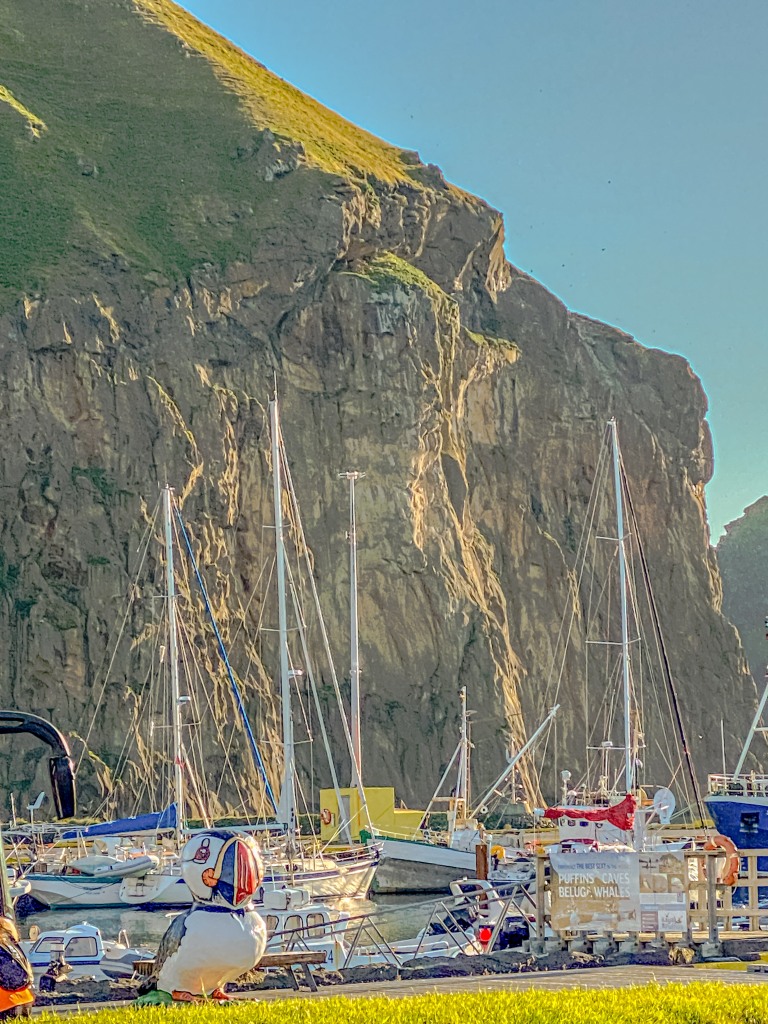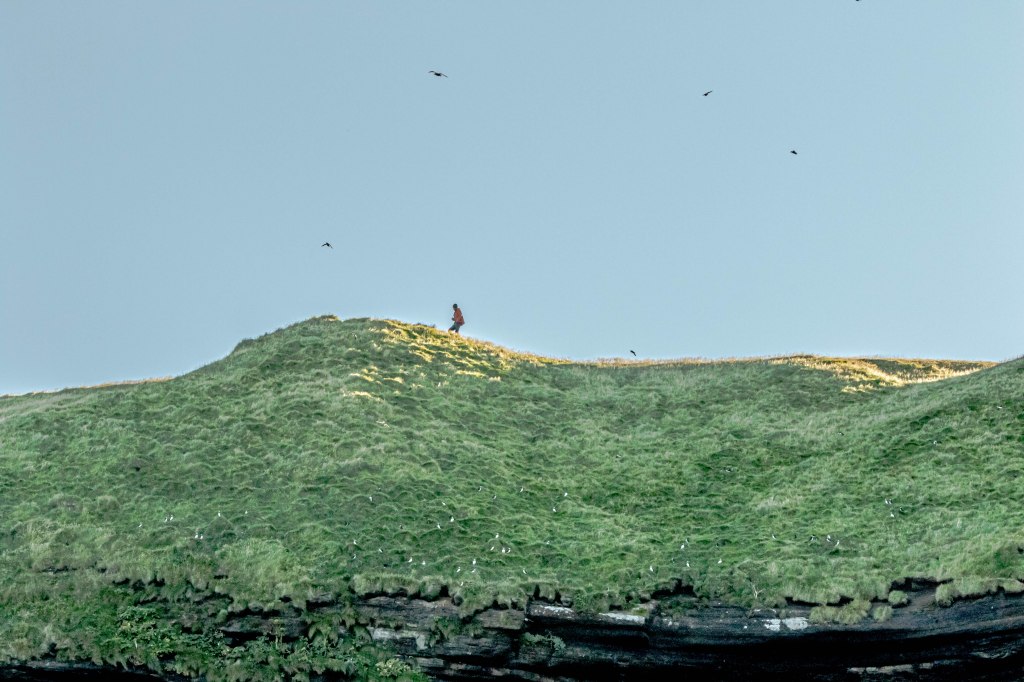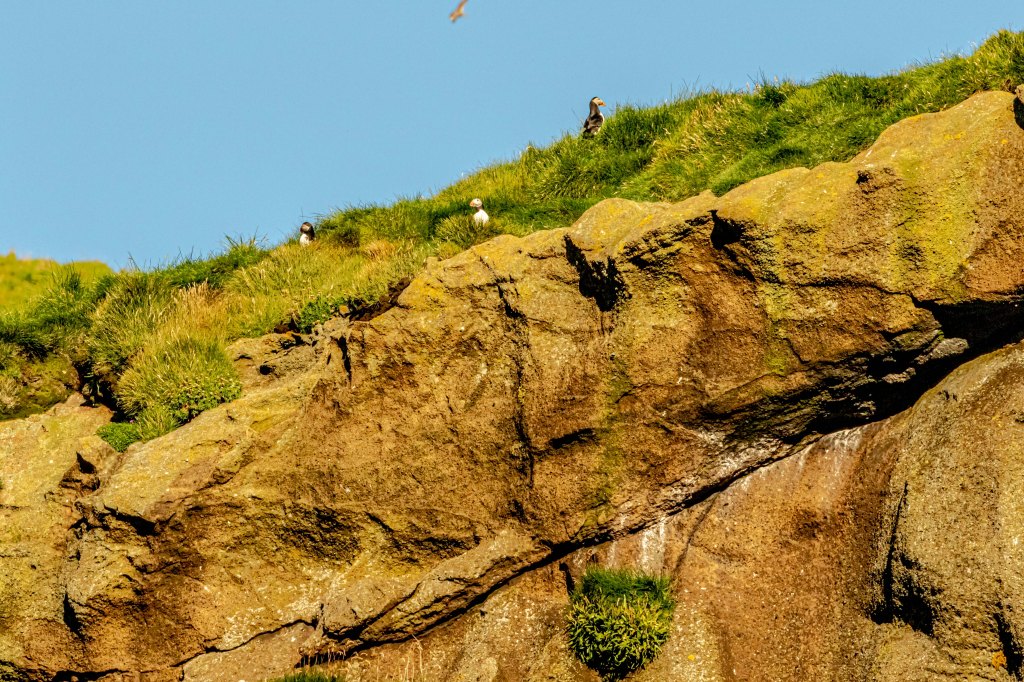August 16, 2022:

The weather gods were still smiling on us when we pulled into the port of Heimaey the morning of August 16, 2022: Jim and I had visited here before, and had experienced the bone-chilling cold you often find on this exposed archipelago of islands off Iceland’s southwest coast. Since we were going out on a boat around the island to see the puffin colonies (the largest concentration of Atlantic puffins in the world), we were happy for some sunshine! Heimaey is a tiny place, and the town was nearly destroyed in a volcanic eruption in 1973. There’s a great volcano museum in town, but our goal was to see puffins, and see them we did!







The cliffs of these islands jut straight out of the water for hundreds of feet. Most of them are covered in succulent long grass, which provides the perfect habitat for puffins to dig their burrows to hatch their chicks. Conveniently, they also provide great foraging opportunities for the sheep grown by the townspeople of Heimaey. Where the rock faces are exposed and no grass grows, other species also make their nests. It is hard to capture in these pictures just how dense the birdlife was. The entire sea around the ship where we were at anchor was covered in fulmars floating on the tide, literally as far as the eye could see. As we approached the nesting areas, fulmars and puffins dotted the sky overhead.







Our boat trip took us around the island, and we were able to see the newest part of the island, added by the volcanic eruption in 1973. Then we returned to the ship for our sail to the tiny town of Djupivogur on the southeastern coast of Iceland. As we sailed away, we saw a small pod of orcas. Our captain had one more special experience for us, though. Since we left Heimaey ahead of schedule, he took us out and around the island of Surtsey, which is the newest island in the world. It was also created through a volcanic explosion in 1963. The island has been named a special protected area, because the only people present on the island are studying the process of “primary succession” by which land goes from being completely barren and lifeless to becoming productive land capable of bearing life. The first organisms to inhabit are the lichens, and they progress to the mosses, which start the process of breaking down the rocks so soil is created, and thus life can be sustained. From the ship we could see that after 59 years since it was created, while most of the island of Surtsey was still stark and barren, there were a few green shoots showing in the more protected parts of the island behind big rocks.






The weather from Heimaey to Djupivogur began to change. We are sailing into a huge storm in the North Atlantic. The captain is trying to stay ahead of the storm, but time will tell. It looks like we might have to say goodbye to the sunshine we have been enjoying, but there really is no bad weather; there are only bad clothing choices!

